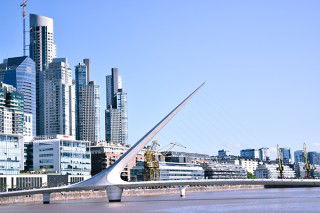The Saudi Arabia cement sector continues to go from strength to strength and a report released earlier this week shows that local cement demand is forecast to grow at a CAGR of 6% to 2015, driven by the country's development plan. The report by Al Rhaji Capital notes that the pace of growth in Saudi Arabia is the highest in the GCC. The strong increase is purely organic due to higher cement dispatches, strong demand and efforts by the government to stabilise prices in the region.
Saudi Arabia's development plan is underpinning construction growth. According to the Ninth Five-Year Development Plan (2009-14), the Saudi government will be spending over US$385bn on construction projects by the end of the planning horizon, including SAR100.5bn on the housing sector. The transport industry will see an investment of SAR111bn, nearly doubling the previous plan's allocation as 4200km of roads, four regional airports and railroad expansions are on the drawing board. The government has announced constructing 500,000 residential units as part of a country wide plan boosting real estate investments to accommodate the increase in young population. This would create a continuous demand over the coming three years for cement consumption which increased by 14% YoY in 2011 compared to 10% YoY in 2008. The government's budget for 2012 continues to focus on capital expenditure with SAR280bn or 40 per cent of resources being allocated to infrastructure projects. In 1Q12, national cement consumption reached 14.3Mt, up 16 per cent YoY.
Market expansion in the kingdom is expected to continue apace. According to the report, 11 out of 14 cement factories have applied for an increase in fuel supply to expand production lines and ramp up capacities to meet rising demand notably from the central and western regions.
The combination of stronger demand and higher realisation prices has resulted in a strong profits for Saudi's cement companies. A report by Global Investment House shows that listed cement producers, excluding the recently-inaugurated Hail Cement, posted sales revenues of US$807.5m in the first quarter 2012, an increase of 34.7 per cent YoY, while net profits surged 23.6 per cent to US$364.5m during the first quarter. Gross margins edged up from 55 per cent to 55.5 per cent in 1Q12.
During the period the company's top three cement manufacturers held a 44.5 per cent share in national dispatches, at around the same level of their combined production share of 44.3 per cent. Saudi Cement Company cornered a 17 per cent market share as the largest domestic producer, putting its total production capacity of 11.5Mta to good use. Meanwhile, Southern Province Cement Co is benefiting from strong demand in the southern markets, enabling it to continue its capacity optimisation. The first quarter also proved beneficial to the country's third-largest producer, Yamama Cement, as its dispatches and production enjoyed a double-digit growth of 27.2 and 29.3 per cent, respectively. In terms of YoY growth Northern cement dispatches increased by 90.9% largely due to the low base effect.
The strong demand led to higher cement prices, which increased YoY by 14.6 per cent to SAR214.50 (US$57.06) and helped producers to lower the impact of the country's export ban. In particular, the western region experienced acute cement shortages and as a result, retail prices shot up to SAR25/bag or SAR500/t (compared to a SAR280/t government ceiling and which consequently swiftly lead to arrests). Saudi Arabia's improved prices also helped counter setbacks in price realisation in other parts of the GCC bloc. While the arrival of new players, the government ban on exports and a ceiling price on cement prices at SAR280/t could lead to overcapacity, the report says that the supply/demand situation would remain balanced through 2015. The projected growth in production capacity will reach 66Mta by 2015 from 47Mta currently.
Looking ahead, the sector is expected to continue growing for the next two years. A report by NCB Capital recently stated: "On the back of the recent construction spike and primarily large government tenders, the Kingdom's oligopolistic cement sector will continue to grow over the coming two years. Despite the introduction of new production lines from new market entrants, cement prices will likely witness an increase." It further added: "This is due to a shortage in fuel allocation from Saudi Aramco, and the decline of clinker inventory over the past two years. However, the Ministry of Commerce and Industry will act to mitigate these price increases, as it heavily regulates the cement market."

Argentina’s cement market expands 8% in 8M25
Argentinian cement consumption slipped 0.4 per cent YoY and 0.2 per cent MoM to 886,079t in Augu...